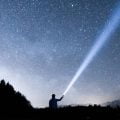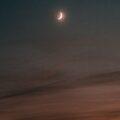For guidance on reading the tables for beginners – please go here
The crescent Moon joins us in the first week of the month and grows progressively “fuller” and brighter for the rest of the month. On the 1st, Jupiter is rising in the northeast. Don’t forget that we revert back to Standard Time during the night of November 2/3.
On the evening of November 5 Saturn is on our meridian. By the end of the month we have three bright planets distributed across the sky with Venus low in the SW before 7pm.
NOTABLE EVENTS
Nov 1 New Moon 08:47
Nov 3 Standard Time begins at 2am
Nov 5 Saturn on meridian at 8pm
Nov 9 First Quarter Moon 00:55
Nov 10 Saturn less than 1 deg north of gibous Moon at 20:50
Nov 15 Full Moon 16:28
Nov 16 Mercury at maximum evening Elongation, Uranus at Opposition
Nov 17 Big Dipper under North Celestial Pole (Polaris) at 20:00
Nov 22 Last Quarter Moon 20:28
Nov 23 Sun enters Scorpius
Nov 29 Sun enters Ophiuchus
MONTHLY TABLE

Dates for the Phases of the Moon
Entries are in Eastern Time and only require time zone correction. Do not use the correction from the “Ottawa-Time” table. Saskatchewan and parts of BC and Ontario do not use daylight savings. In these regions, subtract 1-hour from these times from March 10 to November 3.

Planetary Configurations
When at Opposition, planets will appear on the opposite side of the sky from the Sun – very roughly on the meridian at midnight. Conjunctions are when the planet has the same “longitude” as the Sun. A Superior Conjunction is when the planet is on the other side of the Sun, and an Inferior Conjunction is when it is between the Earth and the Sun. Only Mercury and Venus can be at Inferior Conjunction. Maximum elongation is when Mercury and Venus appear farthest from the Sun in our sky. This occurs either in our morning eastern sky (mor.) or our western evening sky (eve.). Do not apply the Ottawa-correction times to the times in this table.

Prominent Constellations by Seasons


Brightest Stars

One of Canada’s foremost writers and educators on astronomical topics, the Almanac has benefited from Robert’s expertise since its inception. Robert is passionate about reducing light pollution and promoting science literacy. He has been an astronomy instructor for our astronauts and he ensures that our section on sunrise and sunset, stargazing, and celestial events is so detailed and extensive it is almost like its own almanac.













